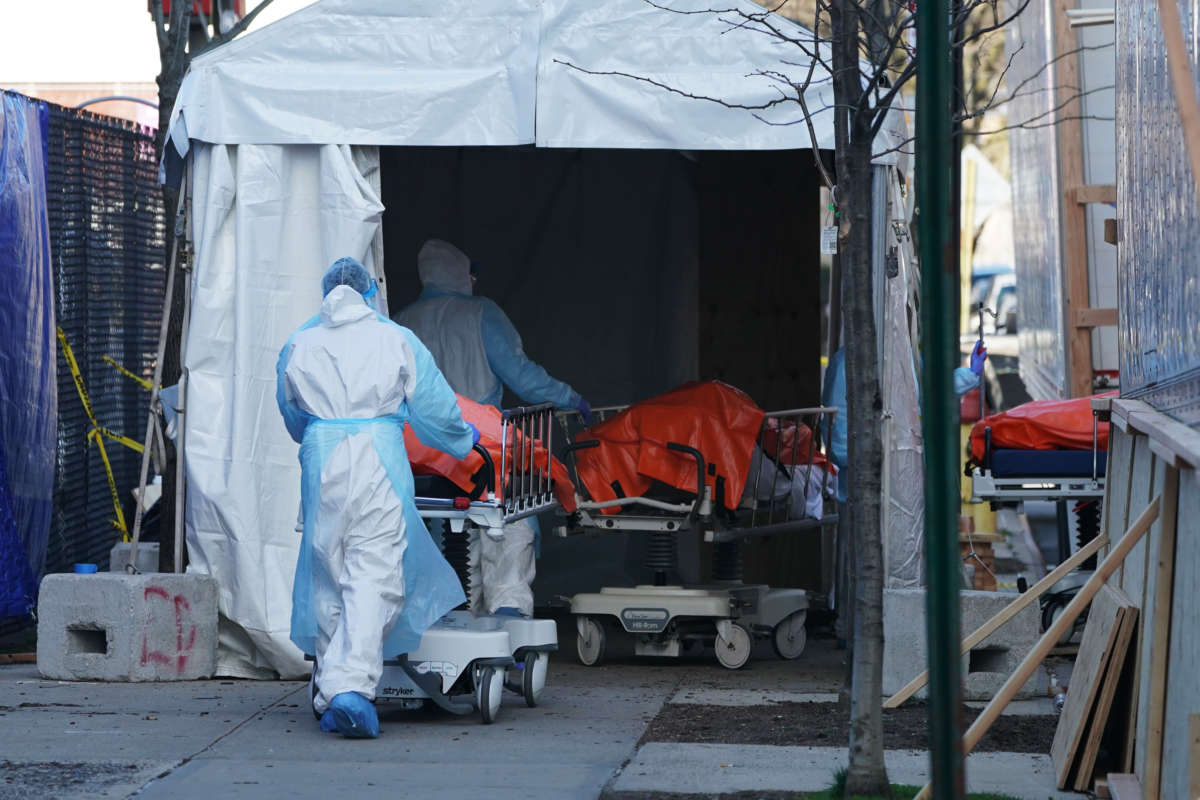Two studies looking at “excess” death counts across the country seem to suggest that the total number of casualties from COVID-19 in the U.S. so far may have been undercounted in a dramatic way during the early weeks of the crisis.
“Excess deaths” from both studies were calculated by taking the total number of deaths documented from March to early April, then subtracting the average number of deaths typically seen at that time of year. From that number, the total number of deaths related to COVID-19 were also subtracted, demonstrating a wide gap of deaths that may have been misattributed.
There appears to be a 50 percent increase in excess deaths in the seven states that were observed, according to an analysis of numbers from the Centers for Disease Control and Prevention (CDC) assembled by The New York Times.
In New York, New Jersey, Michigan, Massachusetts, Colorado, Maryland, and Illinois, a total of 18,000 coronavirus-related deaths were documented from March 8 to April 11. But those states also had a count of 9,000 additional deaths — not yet attributed to COVID-19 — that’s higher than usually seen during that period of time.
Another analysis, from the Yale School of Public Health, found a similar spike in excess deaths during the early weeks of the rise in COVID-19 deaths across the country.
The United States reported 8,128 deaths from the start of March to early April related to COVID-19, according to Yale’s research. Within that same time period, however, there were 15,400 excess deaths seen as well, compared to what is typically observed during those same dates in other years.
It’s possible some of the excess deaths documented in these studies are unrelated to coronavirus — a number of them could have come about, for example, from people who had other medical conditions who were unwilling to get treatment during the pandemic, and who died as a result.
But the high number of excess deaths could also indicate that the initial calculations of coronavirus-related mortalities may have been severely undercounted.
Indeed, the CDC previously warned that initial data on coronavirus-related deaths could be incomplete, as some individuals who died “may be misclassified as pneumonia deaths in the absence of positive test results.”
More than 1.04 million cases of COVID-19 have been identified in the U.S. so far, with 60,082 deaths documented as well, as of 12:30 p.m. Eastern Time on Wednesday.
While there appears to be an undercount of coronavirus-related deaths, some right-wing media personalities have tried to suggest the opposite, that the current death count might be exaggerated. Their suppositions, in many cases, however, sound more conspiratorial than based on actual evidence of malfeasance.
Conservative radio host Rush Limbaugh, for example, told his listeners earlier this month that “governments are eager, almost, to chalk up as many deaths to coronavirus as they can” in order to further “policies they have put in place.” Limbaugh’s comments, however, are without merit, lacking proof of any kind to back them up.
Our most important fundraising appeal of the year
December is the most critical time of year for Truthout, because our nonprofit news is funded almost entirely by individual donations from readers like you. So before you navigate away, we ask that you take just a second to support Truthout with a tax-deductible donation.
This year is a little different. We are up against a far-reaching, wide-scale attack on press freedom coming from the Trump administration. 2025 was a year of frightening censorship, news industry corporate consolidation, and worsening financial conditions for progressive nonprofits across the board.
We can only resist Trump’s agenda by cultivating a strong base of support. The right-wing mediasphere is funded comfortably by billionaire owners and venture capitalist philanthropists. At Truthout, we have you.
We’ve set an ambitious target for our year-end campaign — a goal of $125,000 to keep up our fight against authoritarianism in 2026. Please take a meaningful action in this fight: make a one-time or monthly donation to Truthout before December 31. If you have the means, please dig deep.
